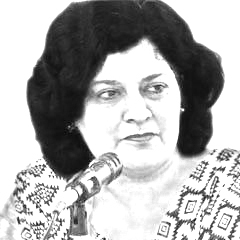Growing up in our society, a child comes across many instances of conflict being resolved either through force, or by authority. The child sees a one sided decision being made, usually with the weaker party’s case being ignored completely. The narrative about different faiths and cultures is not so different — people feel compelled to prove their own culture or faith as superior even in normal conversation. This inability to reach a compromise finds its way into our homes. Common domestic disputes are usually related to possession, space, gender and other such issues. In all these cases, power is the preferred mechanism to resolve conflict.
When the child starts attending a school (private, public or madrassah); again the use of authority and power can be seen everywhere. As a result, his or her mind unconsciously drifts towards the conclusion that this is the way difference of opinion ought to be handled. One of the objectives of a progressive education system, is to prepare an individual for successful social interaction. In our education systems however, confusion about how this is to be accomplished remains, while an emphasis is made on proving our society and state’s one-sided narratives as correct. All this leaves opportunity for misperceptions and misunderstandings to cross cultural boundaries.
There is no doubt 2007’s national curriculum and all its proposed amendments form a comprehensive document, but the real question is as to how objectives are brought forward in text books at the primary, secondary and higher secondary level. For example, the introduction of the social studies curriculum for the fourth and fifth grades say “The curriculum must develop skills such as thinking skills, information gathering, interpreting and analysing, communication, problem solving and decision making; and values such as equality, social justice, fairness, diversity and respect for the self as well as the opinions of others”.
Schools and universities can make tall claims of the latest teaching methodologies and computer literacy, but none of this can prepare students to accept different opinions or cultures
While this sounds in line with the spirit of the subject, realistically speaking, the aforementioned skills are rarely seen in students from public schools, private schools or madaris. The fact is that drafting objectives is not enough. Schools and universities can make tall claims of the latest teaching methodologies and computer literacy, but none of this can prepare students to accept different opinions or cultures. How often do these institutions offer opportunities for cross cultural interactions when it comes to higher educational institutions? And does the human resource involved in different levels of education understand the importance of these skills in the long run? Maybe but maybe not. The Grade 5 social studies book refers to one culture from a particular province in a manner that makes it seem kind; while two others are described as ‘rigid’, though some of their positive qualities are listed as well. Nevertheless, when cultures are compared this way by a young mind, a certain image becomes ingrained in it, which influence that minds perception of that culture forever.
While discussing the commonalities of various cultures, this same book mentions Islam as a ‘common religion’, completely forgetting the existence of other faiths. As a consequence, the child grows up expecting everyone around them to be Muslim. This leads to the creation of negative stereotypes, irrational assumptions, biases and prejudices towards different cultures and faiths. I still remember when I met a Sindhi student when I joined my university; I imagined that he must always wear a Sindhi cap and carry an Ajarak with him. Similarly, Baloch people must always wear big turbans and their traditional heavy dress, and interestingly and most astonishingly — they must always be men, since Baloch women are hardly ever mentioned in the media.
There are no opportunities in our schools, and even at most of our universities, to actually interact with and understand the diverse cultures of our country. Each culture lives in isolation, assuming itself to be the best. Take for example the clashes in January this year between the Baloch Student Federation (BSF) and the students of the Islami Jamiat-i-Talaba in Punjab University. Though multiple factors may have contributed to the clash, the immediate cause was a disagreement over the Pioneer Festival, an event meant to welcome newcomers to the university. If the whole picture is observed, we will likely see that the conflict must have gone through various stages until it finally escalated into a violent crisis. Furthermore, the perceptions formed in the students’ early years of education cannot be ignored as a factor either.
It is high time that the Pakistani state starts looking into methods of crossing cultural boundaries wherever it can. All stakeholders must be taken on board; including educational institution and the media.Cross cultural and interfaith interaction must be encouraged at various levels to bridge the gaps at different educational stages. The human resource involved also needs to be trained and sensitised on the importance of conflict resolution and cross cultural interactions. Only this can lead us to peace, but first we must initiate these principles in our individual capacities.
The writer has experience in the field of education and is currently working as a resource person in the development sector
Published in Daily Times, April 23rd 2018.
